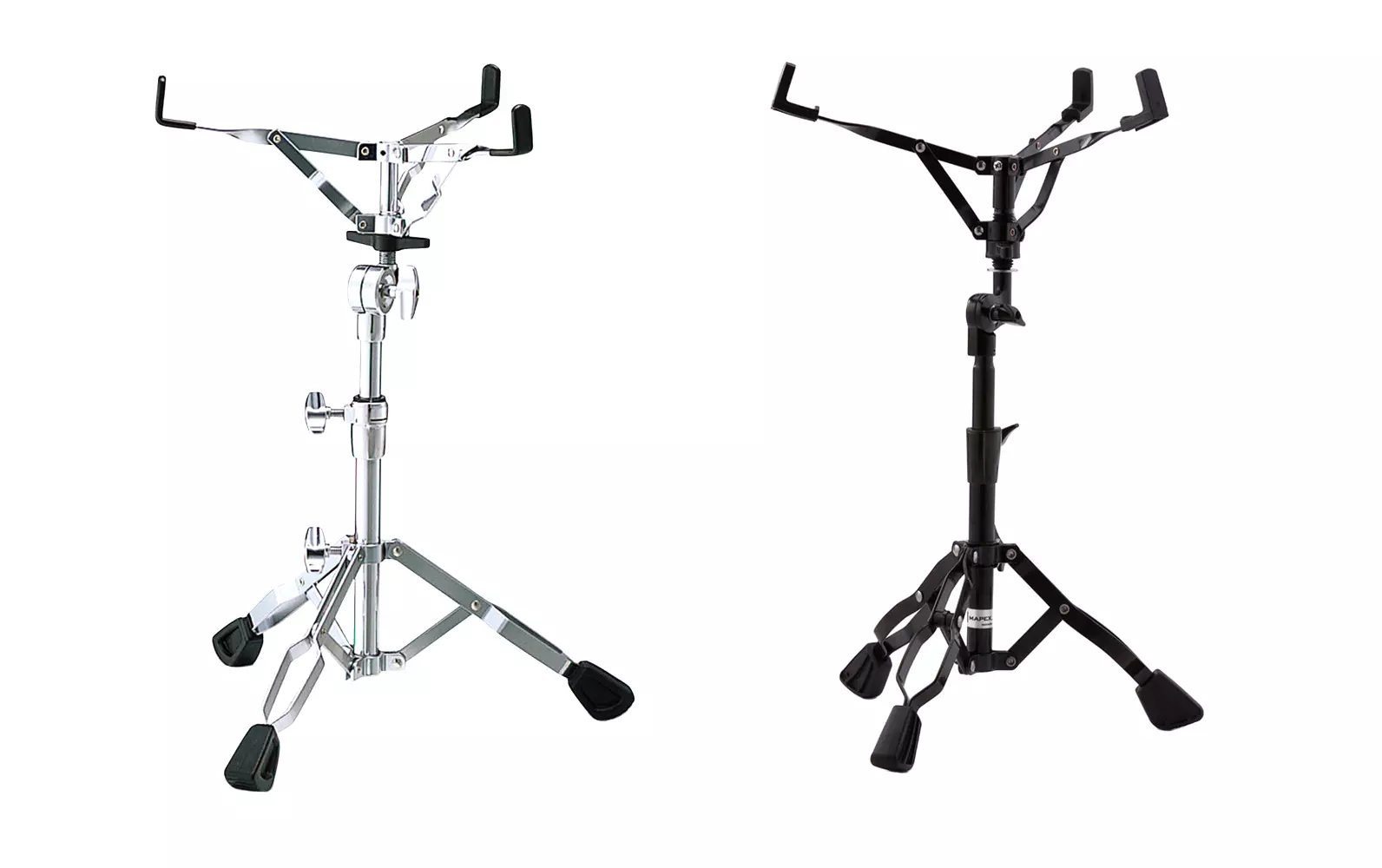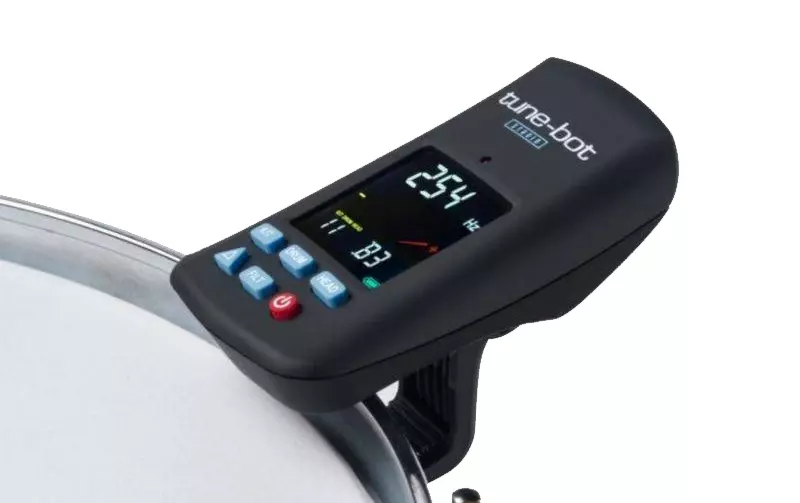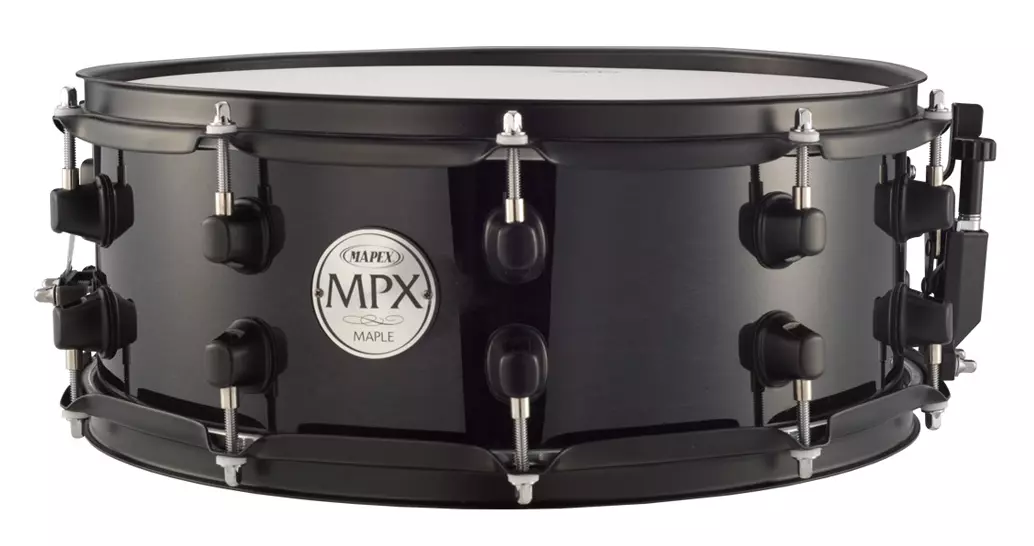Sympathetic Snare Buzz...Symptoms, Causes And Cures

It's your biggest gig of the year. You've spent hours the night before in your practice space, meticulously cleaning and tuning your drums. Now you are getting ready for sound check, and every time you hit your 12” tom, your snare sizzles like a pan of frying bacon. [Mmmmm...bacon...]
That definitely wasn't happening when you were tuning the kit at home, but now that you are at the gig the buzzing won't go away no matter which way you turn the tension knob on the snare strainer!
Take a deep breath – I am going to tell you how to fix it.
But not before we discuss if you SHOULD fix it.
The single biggest problem with snare buzz is your perception of it.
Consider this:
Your ears are about three feet from your snare and you are acutely aware of the frustrating noises it is making. Your audience is much farther away, and (unless they are a drummer/drum tech/sound engineer) odds are good they won't notice the buzz at all.
If you can, have someone else play your kit while you stand in the middle of the room. If you can't find someone who plays drums, just have someone hit the bass, snare and each tom slowly and cleanly. Close your eyes. Forget that it is your kit. Just listen objectively. How bad is it?
For a reality check, you can find Ringo's isolated drum track for “I Feel Fine” on YouTube. Listen to the slight but audible snare buzz when he plays his small tom. If a little snare buzz didn't wreck a Beatles track, it likely won't destroy your live gig either.
Sympathetic vibration is at the heart of a truly “organic” drum sound. It can actually accentuate your sound positively. It can help your small tom cut through the mix, if nothing else!
BUT...maybe that snare buzz is actually bad enough for your audience to notice. If so, here are some simple ways to stop it from happening (or at least limit the effect).
First, listen to when it is happening:
If it happens when another instrument is playing, check your stage/riser situation. You may be getting vibrations through the floor. Most snare stands have enough rubber in their feet to eliminate this, but if you are playing an outdoor show on an improvised plywood stage, you may have to consider using a thicker drum rug or layering up a little to eliminate some of the extraneous vibrations. Also, check to be sure your stage monitor or another amplifier isn't pointing directly at your snare!
If it is only happening when you play another part of your drum kit, check to make sure that you haven't got hardware touching. In tight set-ups, it isn't uncommon to see a tom hitting a snare hoop or a snare stand slightly touching the bass drum.
Second, check your tuning:
Often, snare buzz is caused by a rack tom being tuned too close in pitch to your snare drum. On a 12” or 13” tom there can be a frequency overlap between the tom resonant and snare batter.
Use one hand to alternately muffle the batter and rezo head on the offending tom while playing it. You should be able to find out which head is tuned too close to your snare that way.
Once you know which head is the problem, you can TRY to change its pitch far enough away from your snare tuning to eliminate the buzz. However, that can result in some pretty obnoxious tom sounds.
Instead, you can continue to strike the tom while alternately muffling the snare heads, to see which of them is being affected. Once you have figured out which heads you are dealing with, you can start to gently tune them out of phase with each other.
Keep in mind that if you have a sensitive snare, and it isn't tuned well, it can cause it to sympathetically resonate at multiple frequencies. If you aren't starting with a well-tuned drum, no amount of micro-adjustments are going to eliminate the buzzing...go back and tune the snare properly first, then try again.
Need some help tuning your drums? We have drum tuners available.
Last, consider changing snares:
Drummers LOVE sensitive snares. We buy 4”, 20-ply maple shells and put 30-strand snare wires on them so we can do buzz rolls with brushes...and then we take them to a rock gig and can't figure out why it won't stop making noise! Make sure your drum suits your gig.
If you don't have a less-sensitive snare available, and you know your snare is prone to snare buzz or annoying overtones, consider a thicker resonant head. Most heads marketed for the resonant side of snares are 2 to 3 mil, but you can purchase them as thick as 5 mil. Heads thicker than that may compromise snare response, however.
Experiment with taming your batter head as well. Products like Moon Gels or tape allow you to control how much dampening you use and can easily be adjusted during a set. Rings (Rem-O's, Zero-Rings, etc.) are great for a very controlled, almost “gated” sound. But they can dry the drums out too much to use them live without a snare mic. Also, they are either “on” or “off” with no ability to adjust the amount of dampening.
Dampen your tone with these gels or control it with these sets of rings
To summarize:
Sympathetic snare buzz is something you will encounter a LOT in your drumming career. It will make you crazy if you try to eliminate it from your life completely, but you CAN reduce the amount you hear from both sides of the kit.
Just try to be objective and realistic about how much of an impact it is actually having on your sound.
Remember: with drum tuning, if you aim for “great” then you may get “good”. If you aim for “perfect” you will get frustrated.
Also – experiment with these techniques BEFORE you are at that important gig. A little practice at home will make you feel a lot more confident when tuning for your show.
* * *
Tony Bouma (“Tony B.”) is a drummer, martial artist and painter living in Southwestern Ontario. In his 25-plus years behind the kit, he has backed numerous rock, blues and country acts on local and regional levels.
Tony works at Long & McQuade in Cambridge.











